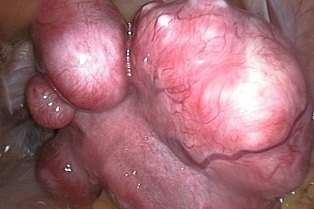The use of morcellators in laparoscopic hysterectomies has been a controversial topic in recent years. Morcellators are surgical instruments that are used to break up and remove tissue during minimally invasive procedures. However, the use of morcellators has been associated with the spread of uterine cancer in some women, leading to serious health risks. As a result, the FDA has taken a strong stance against the use of morcellators in laparoscopic hysterectomies.
The controversy surrounding the use of morcellators began in 2013 when a report was published that suggested the use of morcellators in hysterectomies and myomectomies (removal of uterine fibroids) could spread undiagnosed uterine cancer. The report estimated that 1 in every 350 women undergoing a hysterectomy or myomectomy had an undiagnosed uterine cancer, which could be spread by the use of a morcellator.
Following the publication of the report, the FDA issued a safety communication warning against the use of morcellators in the majority of women undergoing hysterectomies or myomectomies. The FDA's warning cited the risk of spreading undiagnosed uterine cancer and recommended that doctors consider alternative methods for removing the uterus or uterine fibroids.
Despite the FDA's warning, some doctors continued to use morcellators in laparoscopic hysterectomies and myomectomies. In response, the FDA issued a stronger warning in 2014, stating that the use of morcellators could significantly worsen the prognosis of women with undiagnosed uterine cancer.
In addition to the FDA's warning, several medical organizations, including the American Congress of Obstetricians and Gynecologists (ACOG) and the Society of Gynecologic Oncology (SGO), also issued statements discouraging the use of morcellators in hysterectomies and myomectomies.
The controversy over the use of morcellators in laparoscopic hysterectomies reached a turning point in 2014 when a high-profile case brought the issue to national attention. Amy Reed, a doctor and mother of six, underwent a hysterectomy using a morcellator and was later diagnosed with advanced-stage uterine cancer. Reed and her husband, who is also a doctor, became advocates for increased regulation of morcellators and spoke out against their use.
The case received national attention and led to increased scrutiny of the use of morcellators in laparoscopic hysterectomies. In 2015, the FDA issued a final warning against the use of morcellators in the majority of women undergoing hysterectomies or myomectomies.
The FDA's warning has had a significant impact on the use of morcellators in laparoscopic hysterectomies. Many hospitals and medical centers have discontinued the use of morcellators, and some insurance companies have stopped covering the use of morcellators in these procedures.
While the FDA's warning has helped to reduce the use of morcellators in laparoscopic hysterectomies, some doctors continue to use them in certain cases. The FDA allows for the use of morcellators in women who have been diagnosed with uterine cancer before surgery, as well as in some women who have a low risk of having undiagnosed uterine cancer.
Despite the controversy surrounding the use of morcellators in laparoscopic hysterectomies, the procedure remains an important option for women who require a hysterectomy. Laparoscopic hysterectomies offer many benefits over traditional open surgery, including less pain, faster recovery time, and smaller incisions. However, it is important for doctors to consider the risks associated with morcellation and to discuss alternative options with their patients.
One alternative to morcellation is a vaginal hysterectomy, which involves removing the uterus through the vagina. This procedure does not require any incisions in the abdomen, which can reduce the risk of complications and infection. Another alternative is an abdominal hysterectomy, which involves making an incision in the abdomen to remove the uterus. While this procedure is more invasive than a laparoscopic hysterectomy, it may be a safer option for women with a higher risk of uterine cancer.
In addition to alternative surgical options, there are also non-surgical options for women with uterine fibroids or other conditions that may require a hysterectomy. These include hormonal treatments, such as birth control pills or hormone replacement therapy, and uterine artery embolization, which involves blocking the blood vessels that supply the uterus with blood.
It is important for women to discuss all of their options with their doctor and to weigh the risks and benefits of each option. Women should also be aware of the potential risks associated with morcellation and should ask their doctor if morcellation will be used during their surgery.
In conclusion, the FDA's warning against the use of morcellators in laparoscopic hysterectomies has had a significant impact on the use of this surgical technique. While laparoscopic hysterectomies offer many benefits over traditional open surgery, the risk of spreading undiagnosed uterine cancer through the use of morcellators is a serious concern. It is important for doctors to consider the risks and benefits of all surgical options and to discuss alternative options with their patients. Women should also be aware of the potential risks associated with morcellation and should discuss these risks with their doctor. The controversy surrounding the use of morcellators in laparoscopic hysterectomies serves as a reminder of the importance of patient safety and the need for continued research and innovation in the field of gynecological surgery.
